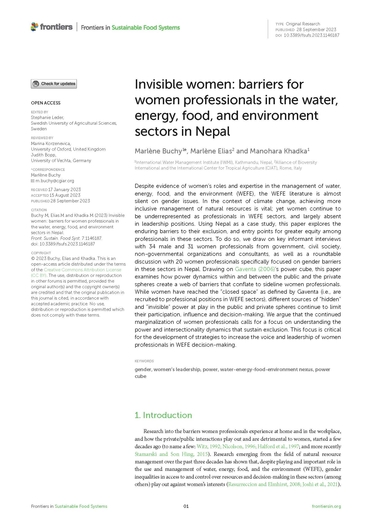Invisible women: barriers for women professionals in the water, energy, food, and environment sectors in Nepal
Abstract
Despite evidence of women’s roles and expertise in the management of water, energy, food, and the environment (WEFE), the WEFE literature is almost silent on gender issues. In the context of climate change, achieving more inclusive management of natural resources is vital; yet women continue to be underrepresented as professionals in WEFE sectors, and largely absent in leadership positions. Using Nepal as a case study, this paper explores the enduring barriers to their exclusion, and entry points for greater equity among professionals in these sectors. To do so, we draw on key informant interviews with 34 male and 31 women professionals from government, civil society, non-governmental organizations and consultants, as well as a roundtable discussion with 20 women professionals specifically focused on gender barriers in these sectors in Nepal. Drawing on Gaventa (2006)’s power cube, this paper examines how power dynamics within and between the public and the private spheres create a web of barriers that conflate to sideline women professionals. While women have reached the “closed space” as defined by Gaventa (i.e., are recruited to professional positions in WEFE sectors), different sources of “hidden” and “invisible” power at play in the public and private spheres continue to limit their participation, influence and decision-making. We argue that the continued marginalization of women professionals calls for a focus on understanding the power and intersectionality dynamics that sustain exclusion. This focus is critical for the development of strategies to increase the voice and leadership of women professionals in WEFE decision-making.

